
Ikebukuro Group
Research
Aptamers are nucleic acid ligands that specifically bind to specific molecules, and our laboratory is acquiring and improving aptamers that strongly bind to specific proteins and low molecular weight compounds. We are also developing sensors that combine such aptamers and enzymes.
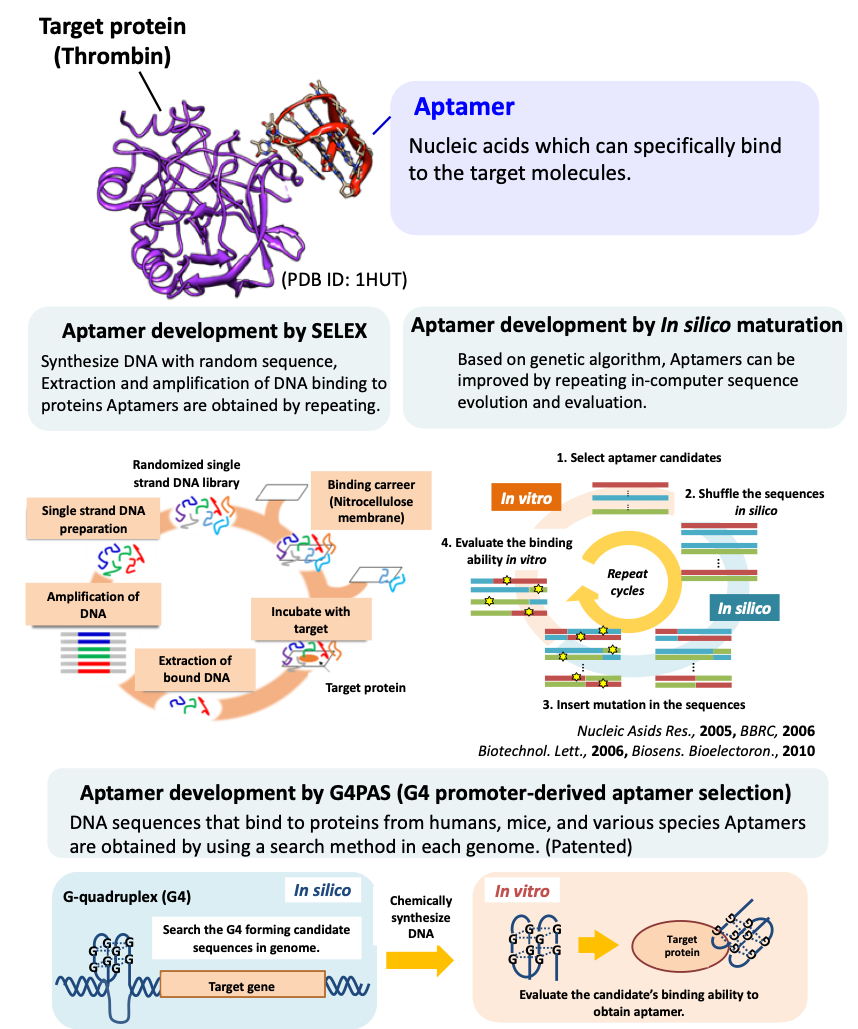
Methylation of human genomic DNA has been shown to be involved in various diseases, including cancer. Focusing on methylated DNA recognition proteins and DNA structures characteristic of the human genome, our laboratory aims to develop a DNA methylation detection system and apply.
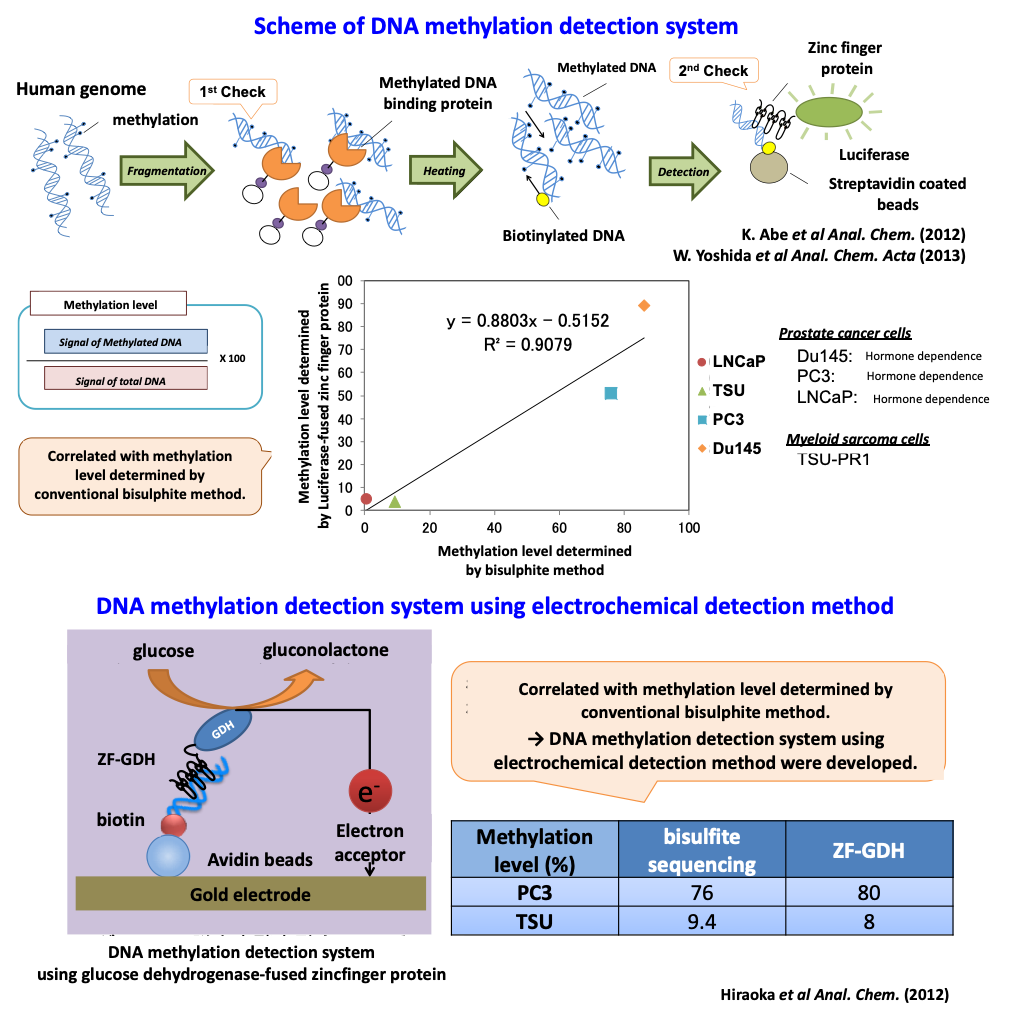
One of the advantages of using aptamers is that aptamers with various functions can be designed by combining and improving their DNA sequences. Utilizing this property, we have succeeded in developing new detection technologies and designing microbial gene expression control tools by designing DNA and RNA sequences.
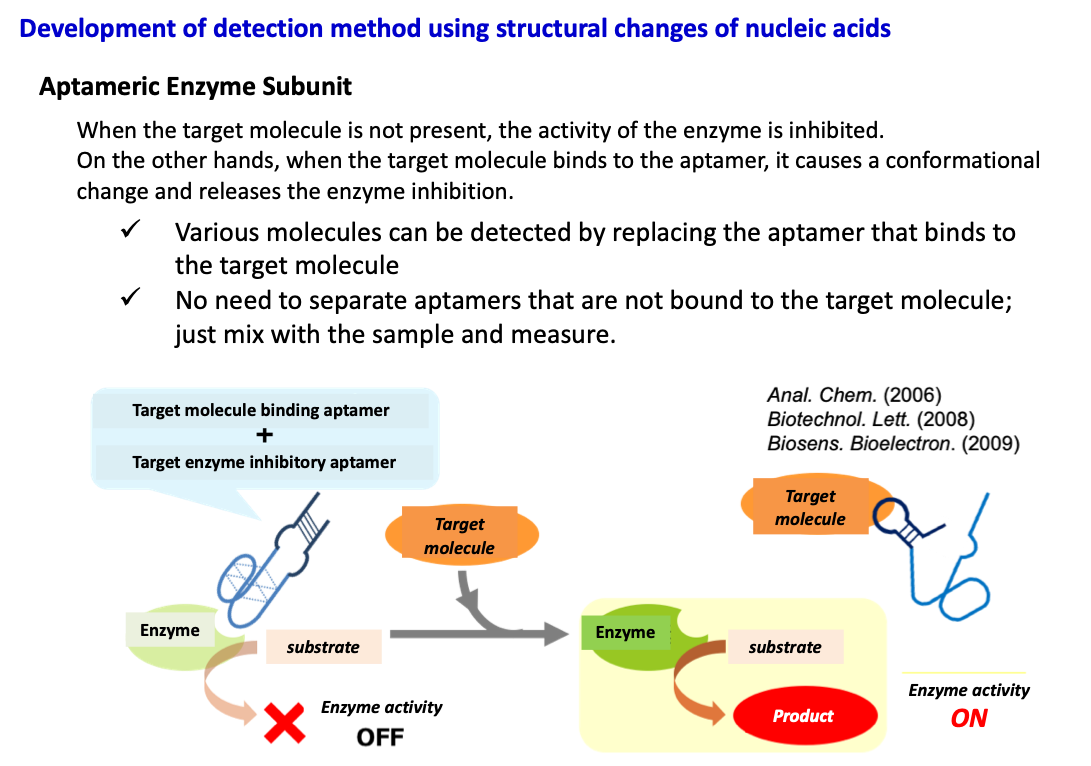
We are developing DNA aptamers that bind to amyloid-forming proteins that cause neurodegenerative diseases such as Alzheimer's disease and Lewy body dementia, and aim to apply them to analysis of patient brain tissue and amyloid formation processes.
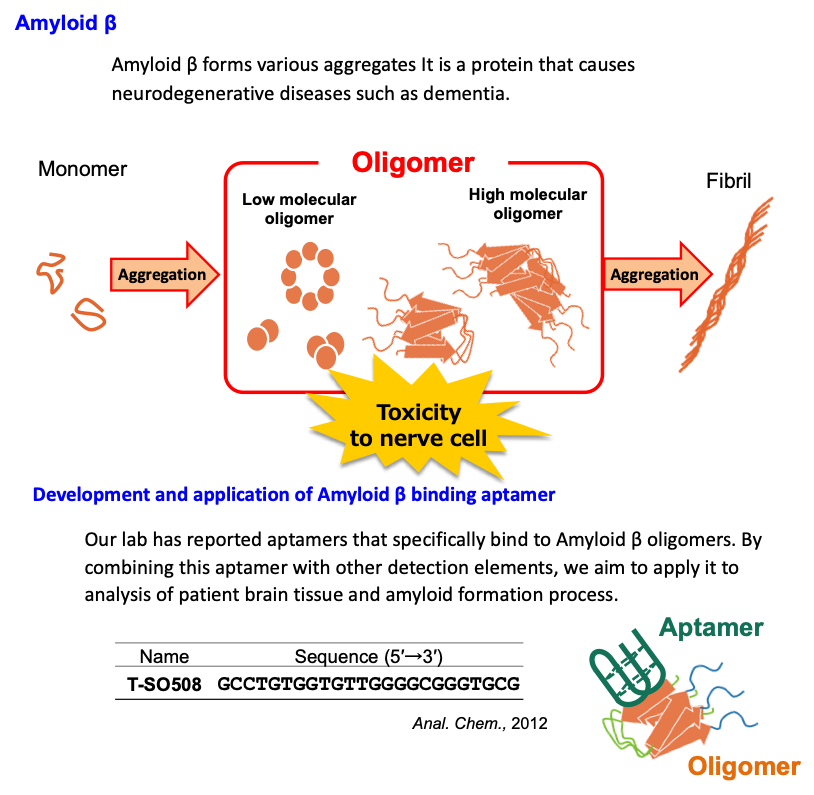
Tsugawa group
L-lactate is a key biomarker for clinical diagnostics, sports medicine and food quality control. Recently, L-lactate biosensors employing L-lactate oxidase (LOx), especially LOx derived from Aerococcus viridans, are commonly used to measure L-lactate concentration. However, the presence of dissolved molecular oxygen affects electrochemical measurement system employing oxidase with the combination of artificial electron mediator. Therefore, we created an engineered LOx, and developed L-lactate biosensor employing this engineered enzyme to minimize the oxygen interference effect on sensor signal. We revealed that the L-lactate biosensor employing the engineered LOx (A96L mutant) showed drastic reduction in oxygen interference. These results allow accurate detection of lower L-lactate concentrations.
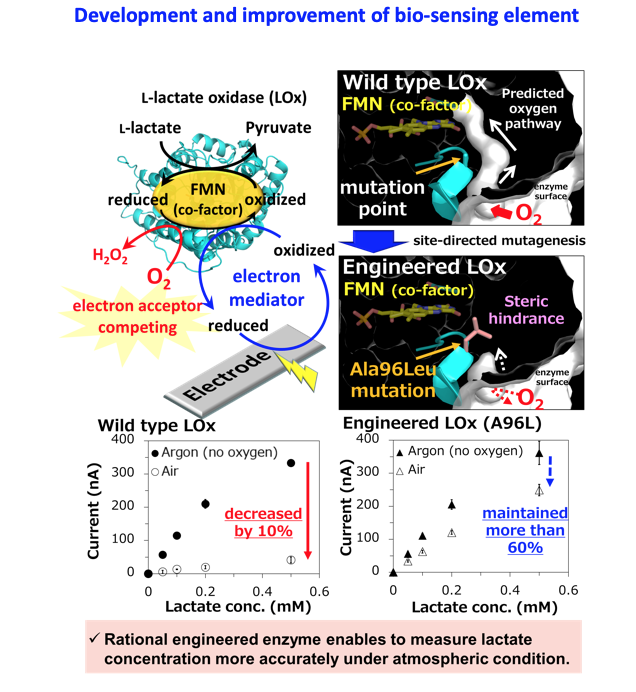
With the increasing demand for more accurate and precise monitoring of blood glucose, further development of novel principles and biosensing molecules are expected, to be dedicated for the diabetes care. Especially, the development of novel continuous glucose monitoring (CGM) system is inevitable in order to realize the future artificial pancreas. We have developed direct electron transfer (DET) principle based CGM sensor using FADGDH complex.
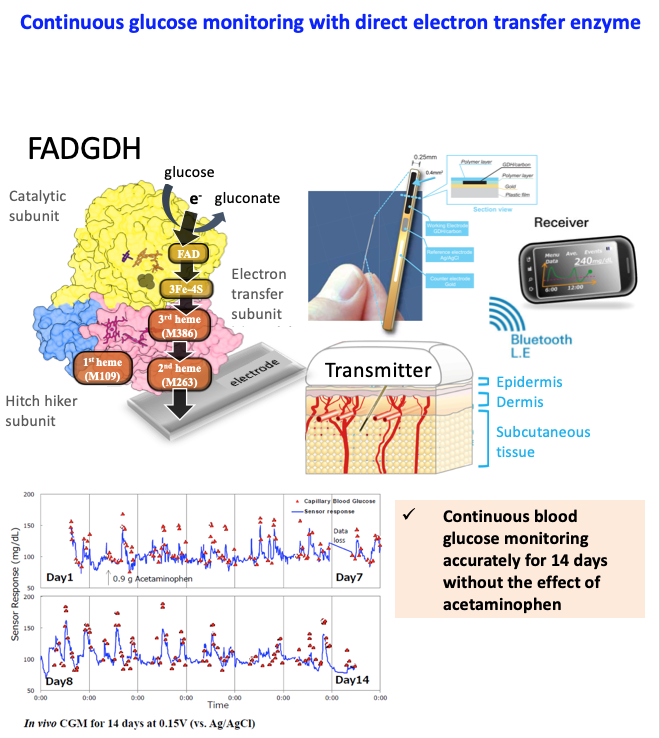
Asano Group
Previou research
Present Research
The small bispecific antibodies (bsAbs) has been expected to be used as a cancer therapeutic molecule because it can crosslink two different molecules. However, except one case, almost all bsAbs has not been approved as pharmaceutical, because there are no effective production technology. To accelerate the development of bsAbs as pharmaceutical, we focus on a comprehensive structure rearrangement of bsAbs to improve activity, and the utilization of next-generation bacterial host such as Brevibacillus and cyanobacteria to improve productivity.
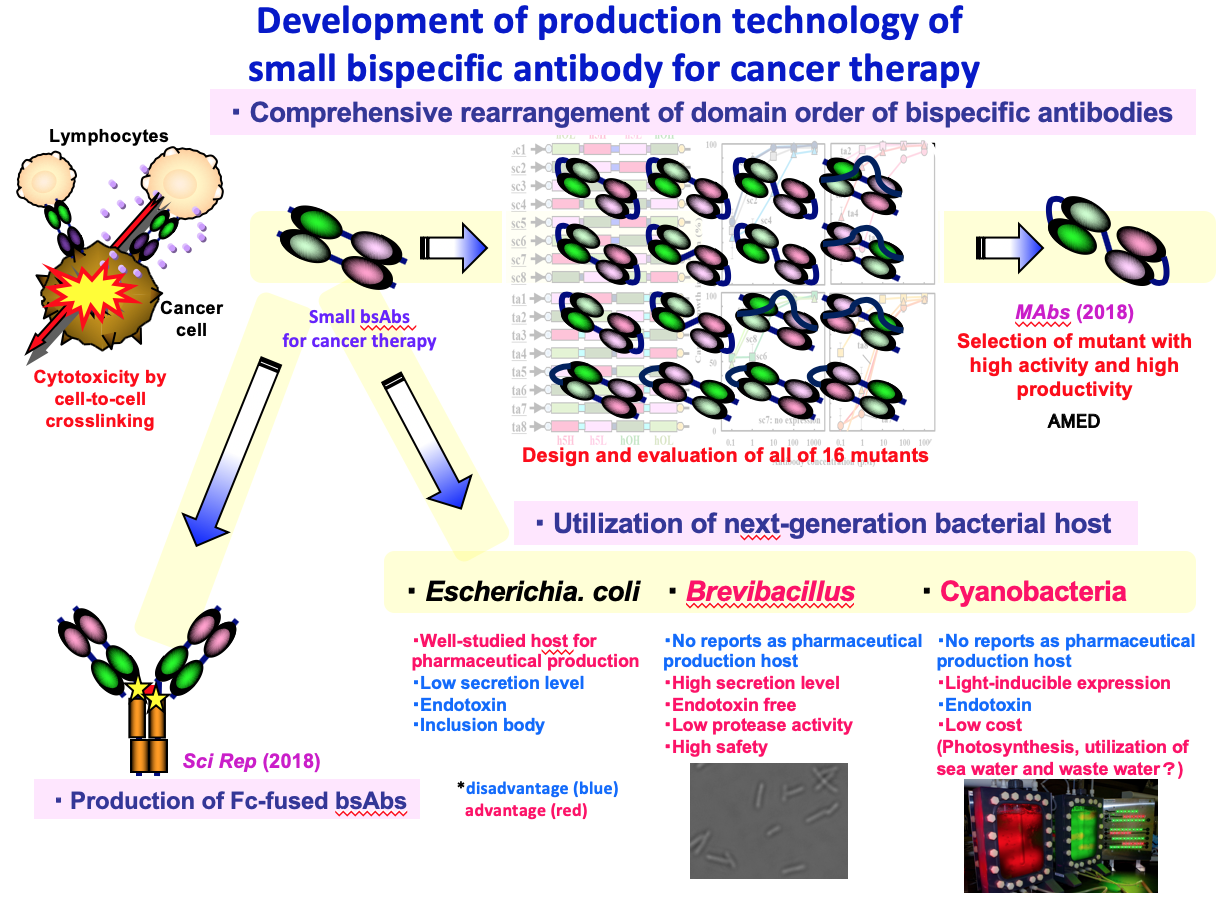
We design and evaluate the novel artificial antibodies for medical application. Specifically, we collaborate with external institutions to develop multi-specific antibodies by fusing various antibody fragments for effective cancer therapy. In addition, we focus on a development of prodrug design of artificial antibody which can attack only cancer cell without side effects. Furthermore, we also analyze their mechanism to develop further functionalized artificial antibodies.
We are engaged in the development of a novel biosensor to detect disease markers in the blood rapidly with high sensitivity and easy procedure. Although ELISA is universally used to detect target molecule using antibody, it is time-consuming due to the complicated procedure. Electrochemical method is suitable to achieve high sensitivity, simple procedure and rapid detection. By labeling the detection antibody with the oxidoreductase, the target antigen can be measured electrochemically. However, it is difficult to prepare the homogeneous enzyme-labelled antibody. Therefore, we are aiming to develop the technology to label the antibody with the enzyme uniformly through genetic engineering.
